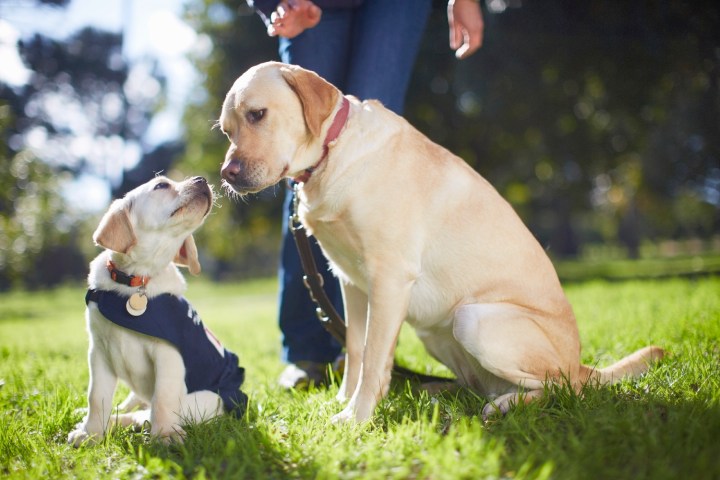What do you get when you cross the latest artificial intelligence technology with man’s (or woman’s) best friend? On one end of the spectrum, it’s the door-opening, faintly militaristic robot dog created by robotics firm Boston Dynamics. On the other, it’s a new project coming out of the Georgia Institute of Technology, where researchers have used A.I. to predict which canines have the potential to successfully complete guide dog training.
As Ceara Byrne, a Ph.D. student at Georgia Tech’s School of Interactive Computing told Digital Trends, training guide dogs is intensive work. Many service dog organizations, such as the Canine Companions for Independence (CCI), are nonprofits that rely on donations to operate. It costs these organizations upward of $50,000 to raise and train a single service dog from puppyhood through graduation. Unfortunately, up to 60 percent of dogs in the United States that start the training never complete it.
“The earlier that we can predict which dogs will become successful working dogs, the more we can help organizations, such as CCI, save on resources and other investments,” Byrne said.
To help carry out these predictions, the team developed a sensor-filled ball and tug toy. After two years’ of continuing data collection — analyzing metrics such as the force, frequency, and duration of bites — the team claims the smart toy can tell them which dogs will complete their training with 87.5 percent accuracy. This is achieved by analyzing the “measured interactions” with the toy using machine-learning techniques to discover the patterns of interaction that correlate with the successful placement of a working dog. The results could help save up to $5 million per year in resource costs across the U.S.
“Our initial prototypes were just the beginning of a research area with tremendous potential,” Byrne said. “We are currently exploring new form factors for the instrumented toys and new interactions that might allow us to extend our work to other domains, such as police dogs, search and rescue dogs, and other working dogs. Collecting interaction information could [also] be a powerful tool for professional dog trainers and pet owners alike, as dogs could be monitored for changes in their interaction patterns that might indicate their health status as well.”
A paper describing the work was recently published in the journal Proceedings of the ACM on Interactive, Mobile, Wearable and Ubiquitous Technologies.
Editors' Recommendations
- Optical illusions could help us build the next generation of AI
- Read the eerily beautiful ‘synthetic scripture’ of an A.I. that thinks it’s God
- Like a wearable guide dog, this backback helps Blind people navigate
- Inside the rapidly escalating war between deepfakes and deepfake detectors
- The BigSleep A.I. is like Google Image Search for pictures that don’t exist yet



